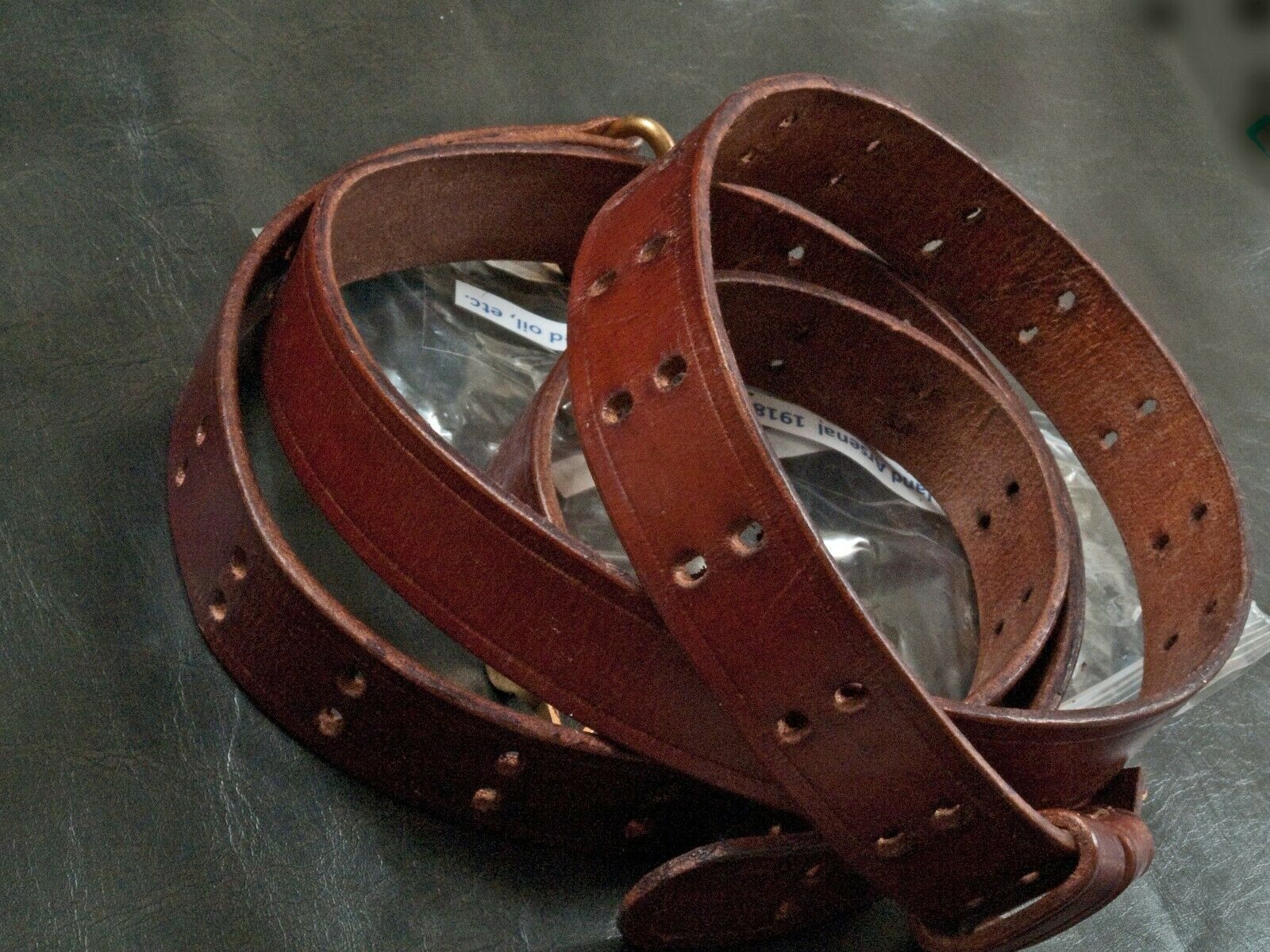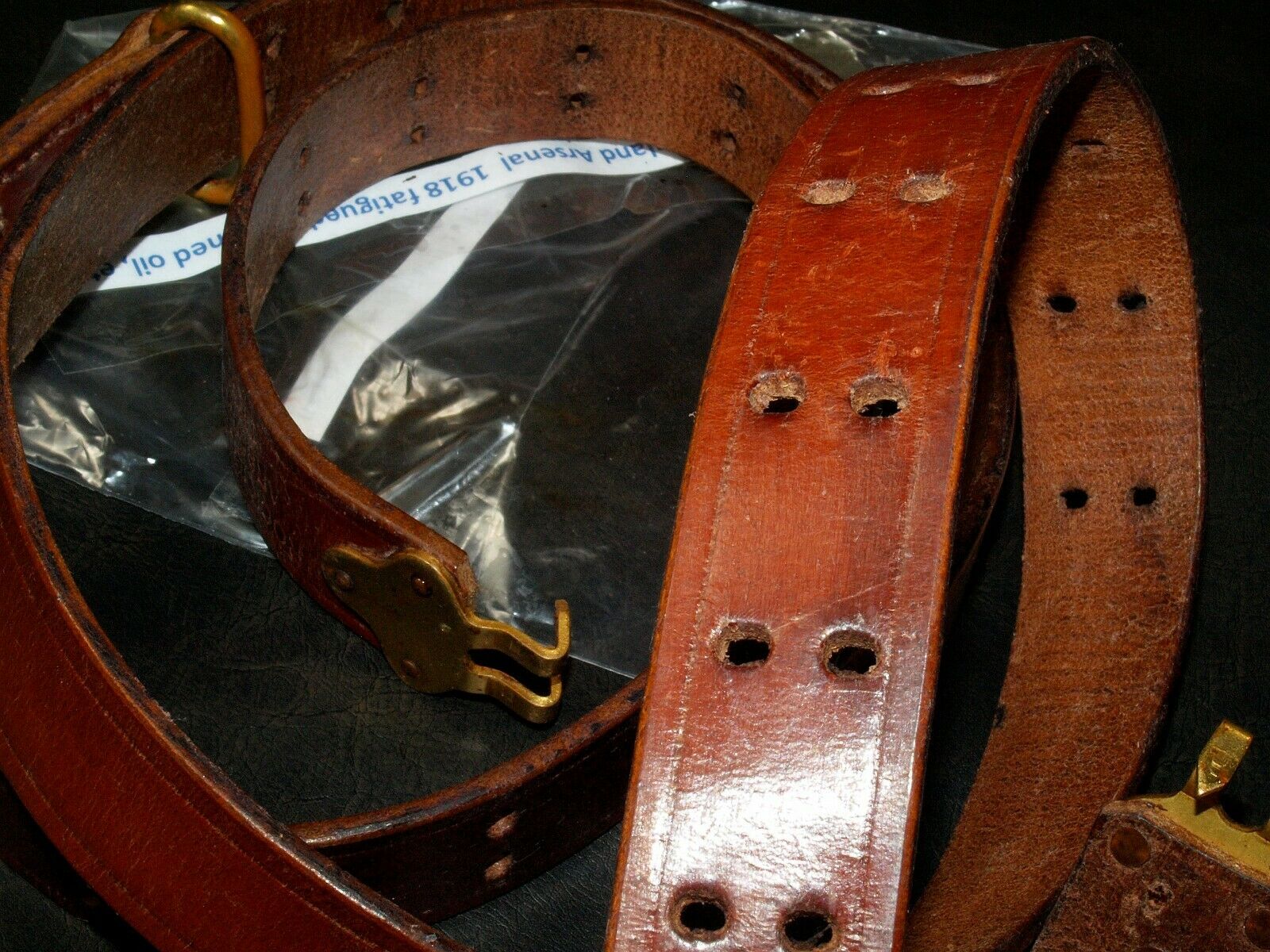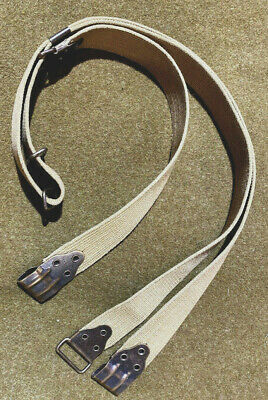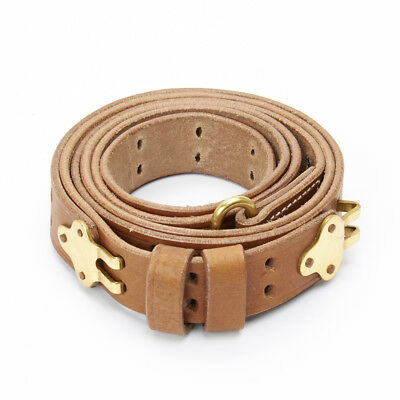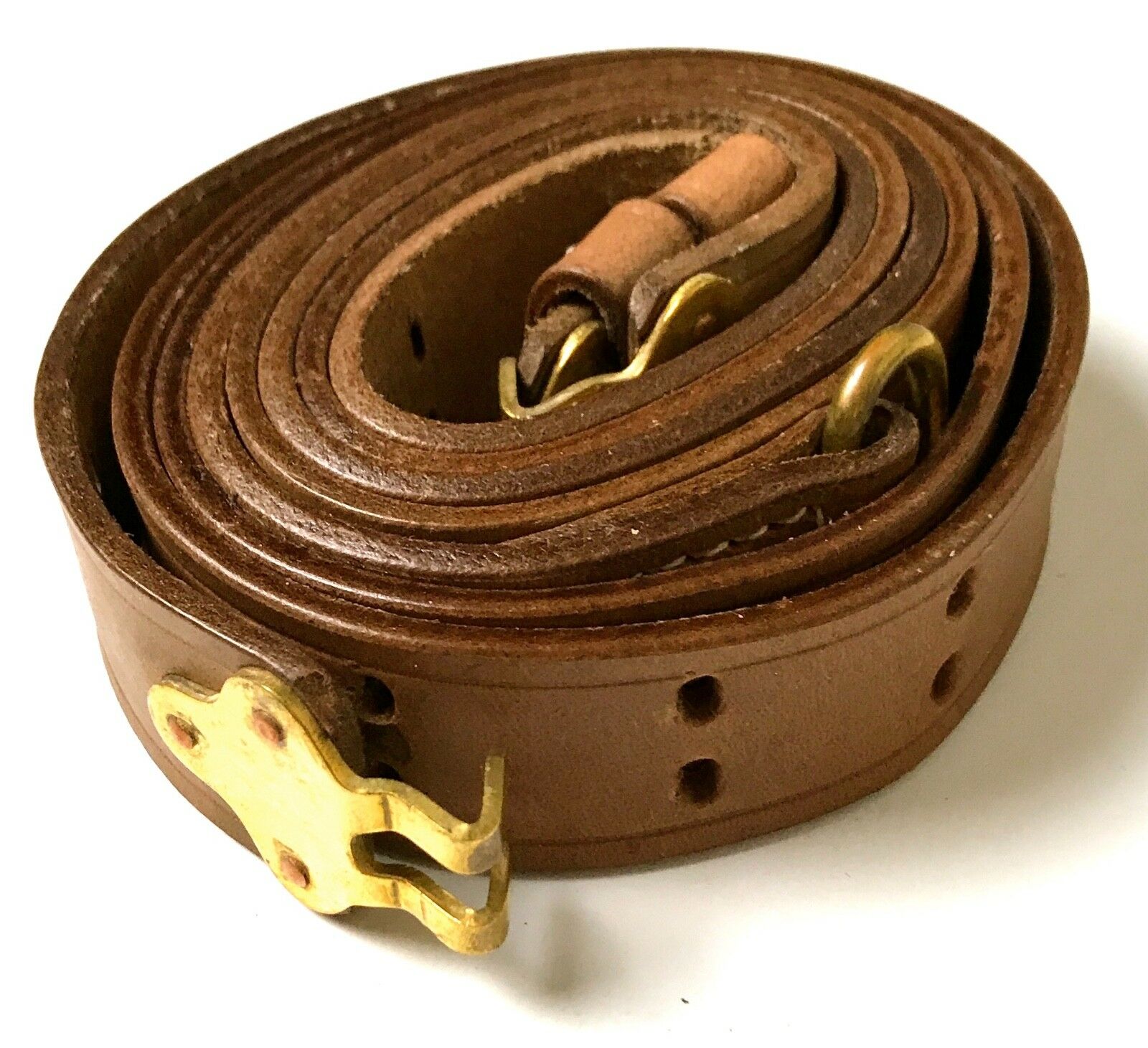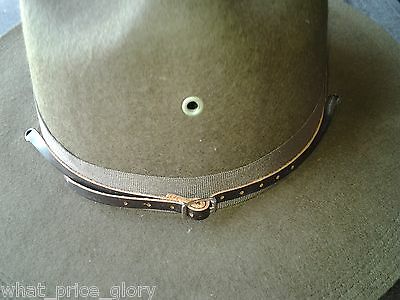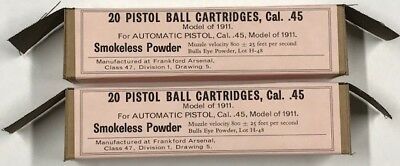-40%
M1907 sling repro brass fittings KERR or ROCK ISLAND WWI DATED '17 & '18
$ 10.96
- Description
- Size Guide
Description
I have these marked "Rock Island Arsenal 1918", Kerr Co. 1917, and sometimes, UNMARKED. Ask about that last item, though, before bidding. Will probably not re-stock the unmarked. DO have unmarked, dyed brown, brass hooks, as a regular item, and will substitute if someone wants unmarked AFTER I run out.Any strong preference, as noted....CONTACT ME BEFORE BIDDING!! This is ten to eleven ounce select leather.
If you do not state a preference, I simply send whichever first falls under the hand!!!! One sling per auction. Neatsfoot will darken any of these down and make them look more as they did in service. They will ALSO last many times LONGER--so it pays. Shoe supply places stock Neatsfoot oil ( old terminology: "neatsfoot's oil").
Same genuine cowhide (the finishes on my slings may differ, but they are ALL selected cowhide leather, no synthetics of ANY kind!!!), same "to regulation" quality of thick, sturdy leather...but marked or unmarked.
Note the sturdy fittings and elliptical holes. These are NOT cheap, commercial "sort of" copies, they follow the old, original drawings.
You can pick either. If no choice is selected (BEST TO CHECK BEFOREHAND IN CASE ONE IS LOW OR SOLD OUT!!!), I sent whichever falls first under the hand.
In over 50 years of collecting and shooting the M1 Garand and other U.S. military rifles, I've always much preferred the M1907 leather sling and its variants and tried to use the "sling wrap" on my forearms recommended by the best of the U.S. military match instructors.
Note: Most of the stampings, as with the real World War I specimens, are LIGHTER and shallower than shown in the examples used here. I used the deepest on hand (now sold) to show the marking best.
For the past six years or so, I decided to sell of my excess from time to time, and even bought specific items to re-sell to other shooters.
Use of neatsfoot or other leather condition is strongly recommended before these are even fitted to a rifle!!! So prepared, they will usually outlive their owners!! The effects of light coats are shown in the illustrations herein.
World War I style, but with the later, easier to adjust hooks, in sturdy, thick brass.
These are "to regulation" Model of 1907 slings, 46-49" long strap, heavy hooks and fittings.
I have just a very few of these over and above my normal needs, and I have decided to sell them off at very reasonable prices.
NOTE: It is NOT recommended that 70+ year old ORIGINAL M1907 slings be used on rifles actually being carried or shot in a "sling wrap". Once dried or cracked, and sometimes with no obvious symptoms at all, they tend to crack and break. It's happened to me a couple of times, and can be expensive, embarrassing, and once in a while, PHYSICALLY DANGEROUS.
These are technically "reproductions" because they bear non-original markings.
These are also for sale locally. I have only a couple of this variant to sell at this very low price, and only because at the moment I am overstocked.
Elliptical holes, proper rivets, sturdy hooks and D-ring. Rifles and other items are NOT included. One dark dyed sling is shown in ONE photo for contrast. That also is NOT INCLUDED.
Those inscribed are marked just as shown and would be appropriate for use/display with any U.S. rifle of WWI vintage. Indeed, these were used long after WWI, well into the 50's, tending to outlast the rifles in service. Originally, the brass fittings would've been "blackened" with a coat of paint, which wore off quickly in service.
Generic information on the M1907 and background:
The U.S. Sling, Rifle Model of 1907, featured two sturdy hooks ( called "frogs" in some parts of the world ), was comprised 10 or 12 ounce leather strapping, 1 1/4", in two belting components: the longer by regulation ran 46-48.5". The shorter, bearing the "D" ring, was typically 24" to 26.5". Length was adjustable, and they were rigged standard with the hook "flats" facing away from the butt stock. However, originally, there were various other uses and applications for the slings, and they were often rigged "upside-down" by users who wanted the sharp hook ends AWAY from their arms while shooting.
These were used on the last of the U.S. Krag rifles at the end of their duty, all '03 bolt action variants, the M1917 "Enfield" U.S. Rifle, the M1 Garand, even shotguns, and pretty much any rifle on military duty which could/would accept a 1 1/4" sling. Rumors to the contrary, if properly conditioned, they held up better to most climate and moisture conditions than the later web. They were slowly replaced by web slings primarily because the web units were much cheaper.
Until well into 1942, metal fittings were brass, originally "blackened" ( that finish wore off almost immediately), after 1942 almost entirely blackened steel. The blacking could be phosphate, blue, or various paints or lacquers. It was adjustable for use as a shooting brace/stabilizer with a "sling wrap", and because it was so sturdy to use in that incarnation, many additional nations utilized them. Slings were issue at the unit level, and during World War II, generally, slings were OLDER than the rifles upon which they were first mounted. Part of the reason for this was the huge post-World War I surplus in military inventories, and indeed, many 1917 and 1918 dated slings remained in military inventories LONG AFTER WORLD WAR II!!!
These are all "to regulation", with the correct riveting and stitching in the appropriate places, using the newer, easier to adjust hooks. Original hooks seem to have been almost all of the "continuously curved" style, not popular in civilian use because of difficulty of adjust them until holes are somewhat fatigued. The holes were generally elliptical, and numbers varied.
The version--NOT PART OF THIS AUCTION!!--for the Browning Automatic Rifle used a third hook, and was called the "Model of 1907, Modified", albeit in service usually called simply the "B.A.R. sling" or the "1918", neither of which is CORRECT, but which are more descriptive for ordinary folks. Some versions of the B.A.R. sling were longer in gross length, and the extant theory is that these were intended for the original "walking fire" concept, albeit no hard documentation exists to absolutely verify that.



